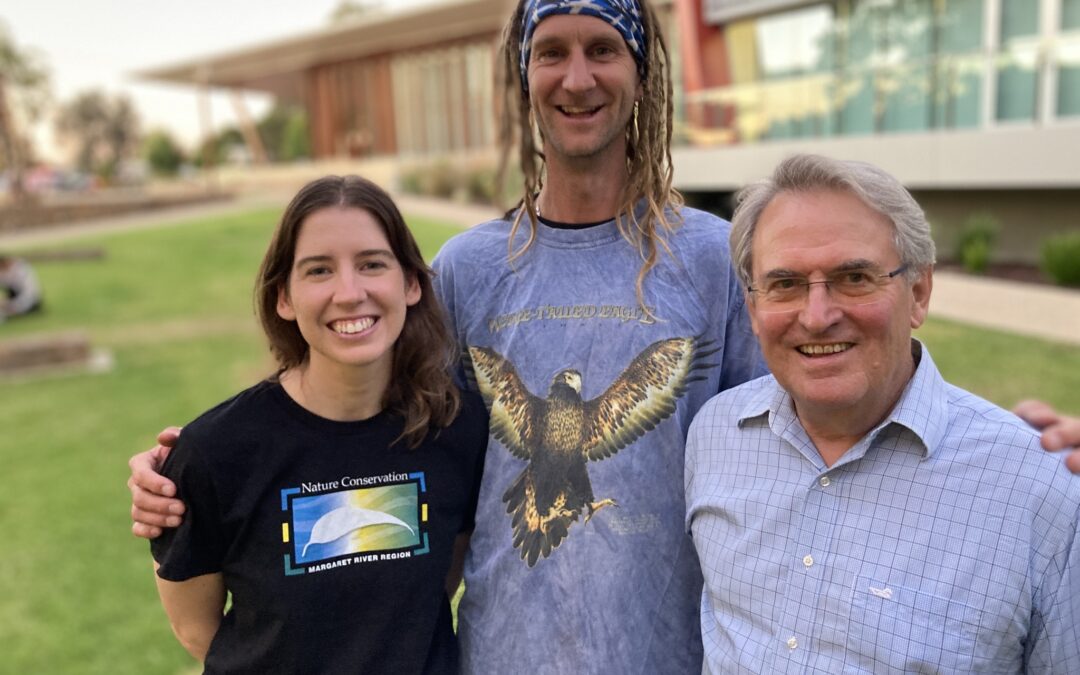Preserving existing bush, planting natives, creating a wildlife garden, stopping weeds, rethinking burning and lobbying for the environment are some of the ways we can care for the special nature of our region.
That was the advice a packed audience heard at Nature Conservation Margaret River Region’s latest environmental sundowner, called The Good, the Bad & the Ugly, supported by the Shire of Augusta Margaret River and Cape Mentelle, and held at Margaret River HEART on Thursday, May 8.
Speakers included University of WA plant biologist Professor Hans Lambers, wildlife guru, tree climber and author Simon Cherriman, and Nature Conservation’s Arum Lily Blitz team members including biodiversity officer Obelia Walker and bush regenerator Rick Ensley.
The evening took locals on a deep dive into how “good” it is to live in an official global biodiversity hotspot that is home to an amazing variety of unique plants and animals. But their diversity, specialised adaptations and limited range means many of these species are vulnerable to the “bad” and the “ugly” – including weeds, feral animals, climate change, fire, land clearing and other human impacts.
“Crappy” soils lead to diversity in the environment
Professor Lambers, who has written more than 600 published papers and the book Plant Life on the Sandplains in South West Australia, discussed the double-edged sword of why our region is so incredibly biodiverse but why it is also vulnerable to invaders.
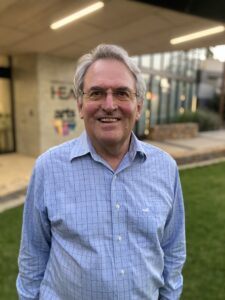
Sundowner speaker Professor Hans Lambers
“We’ve got the crappiest soils in the world… but a tremendous biodiversity as a result,” Professor Lambers said. His fascinating talk highlighted how in the South-West:
- Many of our native plants have “weird and wonderful” roots, releasing acids and “mining the soil” to overcome the lack of nutrients
- Plants with different strategies benefit each other when they grow together in a diverse community because “helping each other is actually far more efficient than competing”
- The highest number and diversity of plants and animals are actually found in kwongan heath or “low scrubby vegetation”
- Karri forest – while beautiful – is not as high in biodiversity because the trees have become the dominant species, thanks to a clever combination of learning how to extract phosphorous from poor soils and forming a special relationship with fungi to help fight off pathogens
- Home gardeners should avoid adding fertilisers, particularly ones containing phosphorous, to successfully grow natives including banksias, hakeas and grevilleas which thrive in poor soils
Stories highlight interconnectedness of nature
Speaking next was Mr Cherriman, who is an award-winning Australian ornithologist, filmmaker and author passionate about wildlife conservation. He used beautiful storytelling and the example of an eagle’s nest to describe and demonstrate the interconnectedness of life, and its fragility.
Mr Cherriman’s photos and videos showed how trees are “living hotels” for a whole suite of animals from insects and bugs through to possums and cockatoos, and their structural diversity is a crucial factor for biodiversity and resilience in ecosystems.
He emphasised the importance of looking after all large trees and remnant bush because “our birds need every hollow we can leave for them.” “You can also create your own wildlife garden to bring some of these birds and other animals to your place,” he said.
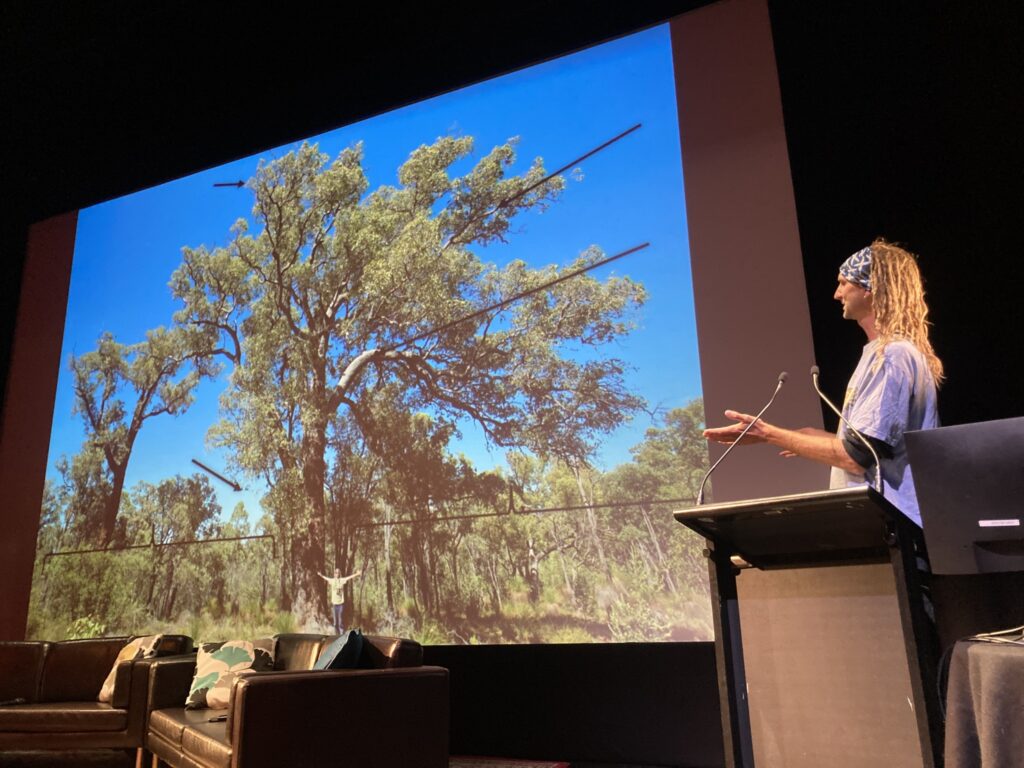
Sundowner speaker Simon Cherriman discussing trees as hotels for wildlife
“Ugly” species for our environment
Meanwhile, Ms Walker shared why arum lilies – although considered a beautiful flowering plant by some – are an “ugly” species for our ecosystem. The environmental weed can form a “dense carpet” and completely swamp native species, destroying the understory where most biodiversity is found.
“It’s so good for us to spend time in wild ecosystems which are rich and diverse and colourful and complex,” Ms Walker said. She said arum lilies are a big threat to these wild places, but the Blitz is making big inroads with 2000-plus landholders signed up and a citizen science weed mapping app called Fieldbook that anyone in the community can use to report arum lilies and other weeds. “It’s simple to use, quite fun and rewarding, so if you’re spending time in our national parks, I definitely recommend getting involved and getting the free app,” she said.
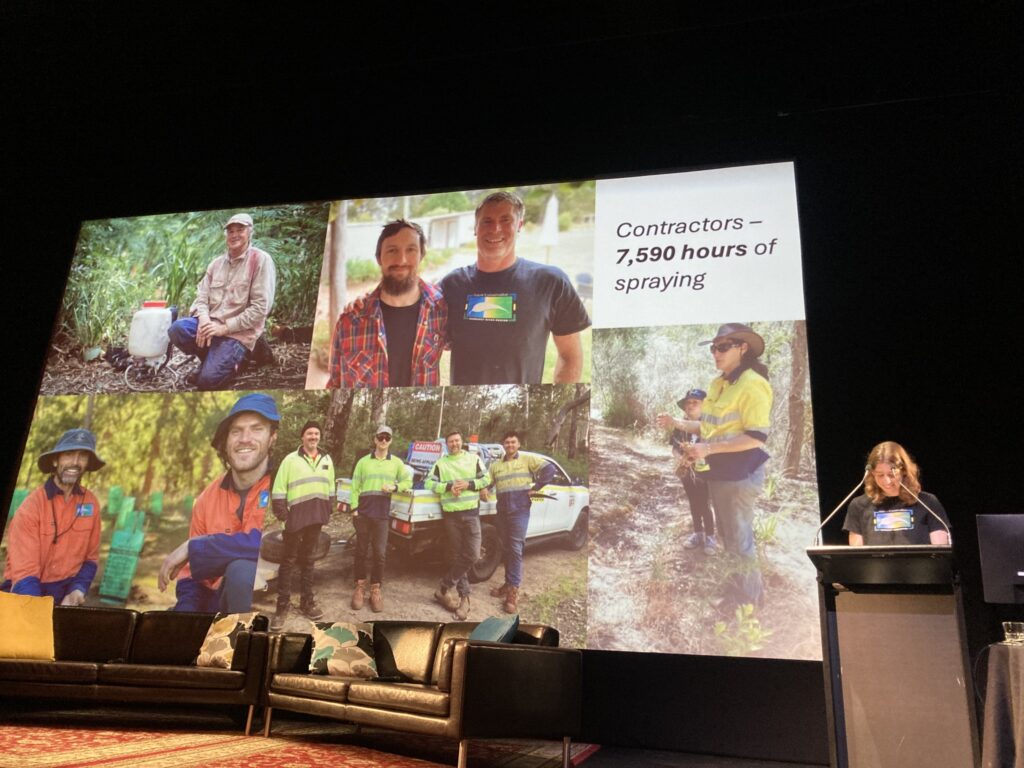
Sundowner speaker Obelia Walker discussed the Arum Lily Blitz
Q&A highlights need for stronger laws on our environment
During an audience Q&A session, the frequency of burning, the need for stronger environmental laws, and illegal four-wheel driving and firewood collection were highlighted as other threats to nature.
Mr Cherriman said there is an “enormous escalation” in four-wheel drives, dirt bikes and firewood collection in areas of remnant bush, which needed better management.
Prof Lambers discussed prescribed burning regimes, using honey possums as an example of one species that is being heavily impacted in national parks due to the frequency of burning and its impact on their habitat and food sources. “What honey possums don’t like is to be roasted,” he said. “Those frequent fires are absolutely disastrous for our native animals. We really need to rethink what we burn and when we burn. If we don’t rethink that, it is one of the major threats to our biodiversity.”
He added that burning the understory – which is where most biodiversity is found – actually increases fire danger. “You can say I’m going to clear that and then you are safe, but the flammability of the next two years is actually much greater than before you burned it,” Prof Lambers said.
Finally, the panellists were asked what one change they wanted to see in how we view, interact or manage our native vegetation and bush. Ms Walker said she hoped to see more people speak up and be an advocate for nature, while Prof Lambers said greater efforts to tackle feral cats and foxes were needed.
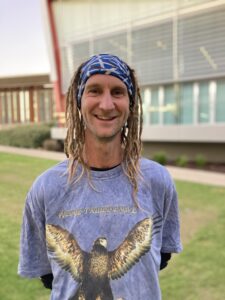
Simon Cherriman called for stronger environmental laws
Mr Cherriman said there was a desperate need for “stronger environmental laws and not the free-for-all treatment of country that is happening now”, combined with “more boots on the ground from authorities to manage how our precious remnant vegetation is used”. For bush regenerator Rick Ensley, one key change was for us all to “realise we are not separate from and superior to nature, and that we’re far healthier with functioning nature around us”.
Nature Conservation general manager Drew McKenzie said the night highlighted how and why our plant communities are so unique, special and interconnected; how fragile they are to impacts like weeds, fire, land clearing and climate change; and how we can all help by controlling weed species on our property, preserving remnant bush, planting natives and creating a garden for wildlife.
He also said it showed why diversity in species and plant structure is so important for wildlife, and why programs like the Arum Lily Blitz are so important for protecting and restoring our native vegetation.
The sundowner was the 11th in Nature Conservation’s series, made possible thanks to funding from the Shire of Augusta-Margaret River and sponsorship from Cape Mentelle.

